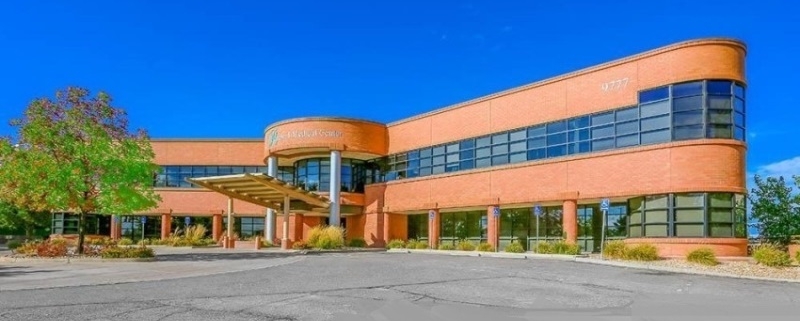Medical Office Real Estate Trends To Watch In 2024
While the office sector is still far from recovering following the COVID-19 hit, the medical office building market continues to thrive, mainly due to asset specificity.
Typically, the sector has a low vacancy rate, with stable tenants occupying the properties for long periods of time. Additionally, the aging population and the advances in medical technology are both supporting demand for such spaces. No wonder that interest from investors in picking up MOB assets is on the rise.
Despite a lower transaction volume compared to previous years, the national average price per square foot stood at $296 in the first half of 2023, according to a CommercialEdge report. From 2017 to 2022, prices consistently hovered between $260 and $290.
For Kevin Smigiel, vice president of Healthcare Advisory Services with the Phoenix office of Transwestern, one of the biggest advantages that an increasing number of investors are now seeing in the health-care real estate sector is tenants’ willingness to sign long-term leases. This has prompted some traditional office owners to turn to this particular type of asset class, despite not pursuing such investments before the pandemic.
“The number of office owners who previously would not pursue a medical deal in their office building for fear of fending off office users are no longer holding that line and have become willing to chase medical deals in order to increase occupancy in their assets,” said Kenneth Smondrowski, senior vice president of Healthcare Advisory Services in the Bethesda, Md., office of Transwestern. “This makes perfect sense because it means longer deals, better credit and stickier tenancy.”
Until recently, MOBs were seen as an alternative asset class, but now they are more of a mainstream investment sector. Rahul Chhajed and Michael Moreno, both senior vice presidents & senior directors of health care with Matthews, agree that medical office buildings are a recession-proof asset class that is not only seen by investors as a way to broaden their portfolios, but they also provide opportunities for consolidation in the space.
“You can buy a building leased by a one-practice physician group, which then gets acquired, and now you go from a tenant with $5 million in assets to $5 billion. That is obviously going to increase the value of real estate,” Chhajed said.
Not Immune To Challenges
Despite some key elements that work in favor of the health-care real estate sector and that make it resilient in the face of economic uncertainty, Shawn Janus, national director of health care with Colliers, points out that the market did indeed experience a slowdown in transaction activity in 2023.
“Volumes were down, with portfolio transactions being particularly impacted. Smaller transactions and single-tenant transactions held up better,” Janus said. “The broader health-care industry also dealt with the changing macro environment. Key factors included the cost and availability of capital and skyrocketing labor costs. From a real estate perspective, health-care providers focused on their real estate strategy, evaluating lease versus own impacts.”
In the upcoming year, the performance of the health-care real estate sector will likely mirror 2023, according to Mervyn Alphonso, executive vice president of development and acquisitions & partner with Anchor Health Properties. High interest rates and construction costs, as well as uncertainty stemming from the geopolitical context, will continue to have an impact on the sector.
Additionally, Moreno believes that health care will be experiencing the same difficulties as other asset types in terms of financing due to interest rates staying up, and maturing debt potentially leading to lower values and distress in non-core assets.
“Health care has similar financing to other asset types, and rates have affected everybody. Many of the larger institutional lenders have also pulled out of the space, so it’s not the greatest financing market right now,” Moreno said.
Another challenge that Janus pointed out is related to the labor environment. Even though clinical space requirements are growing, staffing those clinical functions has caused some projects to be delayed.
“Administrative space, on the other hand, experienced a decrease in demand as providers looked to downsize or off-load space, due to the effects of remote working and/or flexible work schedules,” Janus said.
Many underused office buildings underwent conversions, including to medical office facilities, according to Smondrowski. One such example is Richardson Medical Center I in Richardson, Texas, a 118,472-square-foot property that Big Sky Medical recently acquired from Pillar Commercial. The new owner has rebranded the asset as a medical office building.
What To Keep An Eye On In 2024?
In the upcoming year, the health-care real estate sector will most likely continue to be impacted by high interest rates, even though the general consensus in the capital markets is that the Federal Reserve is either done with their tightening cycle, or close to it.
“While the prospect for rate cuts in 2024 is murky, having a more stable interest rate environment will allow pricing and underwriting to gain its footing,” Janus expects. “Unfortunately, the labor environment may continue to be challenging. The cost of labor may stabilize, but supply will continue to be a challenge.”
According to the Colliers expert, physician shortages have begun plaguing the industry as older specialists are retiring and the number of new entrants hasn’t kept up.
Nevertheless, the sector’s prospects are far from completely dire. Experts agree upon one thing: the rise of mental health-care clinics. As Smondrowski explains, there was less funding in the past for these types of clinics, but that is rapidly changing as these facilities become more in demand.
“Mental health providers are booming right now, with private-pay mental health practices opening everywhere,” Smondrowski said.
Janus also believes that behavioral health will have a growing impact on the MOB sector going forward. The specialist noticed that providers, investors, developers and lenders alike are intrigued with the potential opportunities in this space and are increasingly more interested in understanding this sub-sector and its financial viability.
From a developer-investor’s perspective, no drastic changes are expected in the market next year. Despite sustained demand, factors such as staff shortages and financing challenges will continue to impact the medical office sector, in Alphonso’s view.
“Medical outpatient construction spending reached a peak in 2023. The volume of projects steadily climbed since early 2022,” Alphonso said. “Given Anchor’s current solid development pipeline and additional pending opportunities in various geographic markets, I would expect the construction volume in the sector to be fairly steady in 2024.”
In the past year, Anchor started construction on several health-care real estate projects, with some of them set for completion either next year or in 2025. One of the largest developments they broke ground on was HonorHealth Medical Campus at Peoria, a 100,000-square-foot medical office project in Arizona.
Other health-care real estate developers starting new projects include PMB and its partner Santa Clara Valley Healthcare which broke ground on a 230,000-square-foot medical office building in San Jose, Calif. The 10-story property is slated for delivery in 2025. In the same state, PMB and Sutter Health also began construction on a four-story, 100,000-square-foot medical office building on the Sutter Roseville Medical Center campus in Roseville. Meanwhile, Ryan Cos. broke ground on One Scottsdale Medical, a 101,136-rentable-square-foot medical office building in Scottsdale, Ariz., that is slated for completion next year.
All in all, the health-care real estate sector has remained resilient in the face of adverse conditions and will likely continue to perform well despite the lingering challenges impacting all asset classes.
“I have a positive view of the outlook for health care in 2024, recognizing that the macro environment will still be challenging,” Janus concluded.
Source: Commercial Property Executive




